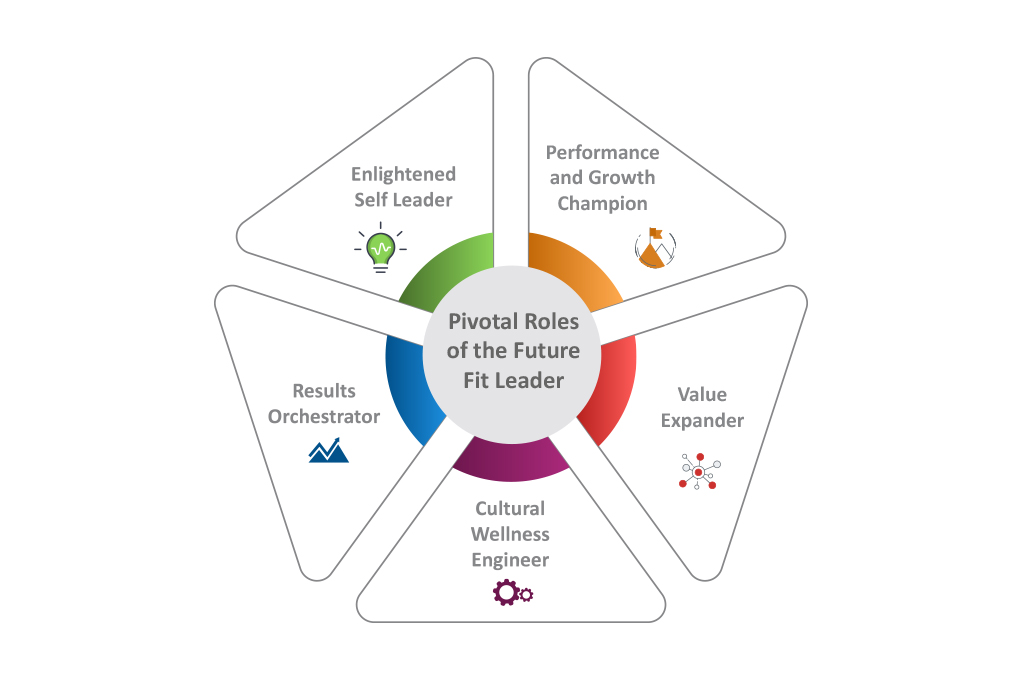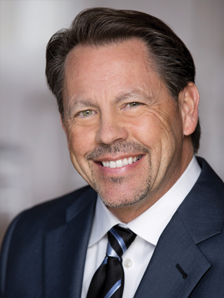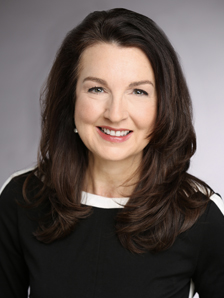Is Your Organization Ready to Succeed in Today’s Era? How to Build a Future-Fit Executive Team
How did Amazon become the world’s largest retailer in just 25 years? Amazon’s extraordinary ascent can be chalked largely to its willingness to adopt nimbleness as a business strategy.
Unlike traditional competitors, Amazon from the outset regularly changed its products and approaches in response to market demand. It zigged while others zagged…or were caught flat-footed. Amazon CEO Jeff Bezos attributes the company’s nimbleness and success to its “Day 1 company” strategy. “Staying in Day 1 requires you to experiment patiently, accept failures, plant seeds, protect saplings, and double down when you see customer delight,” Bezos wrote in a recent letter to shareholders.
As Amazon’s success illustrates to all companies, regardless of their type or size, nimbleness in today’s hyper-speed, turbulent economic market means fluidly responding to changing dynamics. Is your organization and its talent prepared for this new world?
That’s a primary underlying reason for achieving and sustaining a future-fit organization—one that can simultaneously withstand inevitable market changes and achieve long-lasting, positive business results. It’s what propelled Amazon from solely selling books online in 1995 to a highly diversified, $1 trillion market valuation company today. It’s what’s enabling thousands of other companies, from large corporations to small start-ups, to nimbly survive and thrive despite unprecedented market challenges.
Becoming a future-fit organization doesn’t happen overnight, however. It takes a dedicated talent strategy to develop future-fit leaders capable of creating and sustaining:
- Versatile, flexible, and complimentary teams who can take collaboration and creativity to the next level
- More candid and honest dialogue with one another, enabling the organization to prepare for a future that may look dramatically different than today
- Greater vulnerability and trust, enabling leaders to make mistakes and acknowledge they don’t have all the answers, yet still find consistent support from one another
- New and different ideas and diverse experiences, not just among senior executives but from throughout the organization
Achieving these kind of results may require selecting and developing a different kind of leader than many organizations have today. Yet it appears to be critically needed. In a Deloitte survey of more than 10,400 business and HR leaders from 140 countries, 72 percent said they need a new model for leadership in today’s digital era.* The leadership skills needed for tomorrow will be vastly different than what’s required today. Multiple business futurists predict that within the next decade, most leaders will likely:
-
- Lead increasingly virtual, dispersed teams, including gig economy workers with no specific allegiance to your organization
- Lead teams that form rapidly, work in agile, semi-autonomous ways on particular projects, then rapidly disband to work on whatever’s next
- Have access to a variety of new and potentially intrusive employee performance tracking capabilities, posing multiple workplace challenges if not employed wisely
As the contexts and demands of leadership rapidly evolve to meet changing market demands, organizations more than ever need to ensure they’re prepared for the future by developing future fit-capable leadership talent. They also need to devise and provide innovative new ways of supporting that talent to meet changing leadership demands.
Developing Future-Fit Leaders

Based on futurists’ forecasts, trends, research reports, and competency-based analyses, plus dialogue and insights from MDA’s leadership development experts and executive coaches, we’ve determined the following five distinct roles as pivotal to the future-fit leader:
- Enlightened self-leader—Master of self-leadership wisdom via intentional learning and self-awareness, as well as personal energy and attention regulation; manager of sustainable physical, mental and spiritual wellness, resilience, and renewal
- Performance and growth champion—Manager of cognitive-based and science-informed performance; curator of a talent ecosystem and facilitator of talent mobility; growth planner and enabler leveraging immersive learning experiences
- New value creator/performance expander—Forward-thinker emphasizing collaboration and partnership to unlock new and hidden value; model of curiosity, contextualization, and ethical thinking; master of long-view orientation and discernment with fluency in creativity and innovation
- Cultural wellness engineer—Practitioner and leader of initiatives for achieving health and wellness for individuals and teams; fosterer of stress and recovery recycling to build resilience and increase capacities
- Results orchestrator—Architect of dynamic organizational design and rapid team-building capabilities; master of conversational competencies and productive conflict facilitation; engineer of trust-building and leading from the edge
The path to developing the future-fit leader starts with the first role. Efforts to help leaders become an enlightened self-leader can be greatly accelerated through high-quality professional leadership assessment. Through individual feedback, leaders gain an objective, data-based lens into their personality drivers, motivators, and watch-outs. For executives, these insights can help them sustain the energy and inner resources they need to stay at their learning and growing edge.
In a literal sense, assessment also provides a roadmap for CEOs to get the best performance out of their teams amid a changing environment. That’s a huge advantage for CEOs and other executive leaders seeking to drive new behaviors, achieve a new business model, or initiate some other type of transformative business change for competitive superiority. Along the way, those who are assessed learn more about themselves and the organization as a whole, and become better-equipped to cast and create a future-fit organization.
Consider the positive difference assessment has made to the leadership of IRET (Investors Real Estate Trust), a publicly traded real estate company specializing in multi-family housing. According to IRET CEO Mark Decker, assessment revealed new insights—and professional growth opportunities—for himself and the company’s COO Anne Olson and CFO John Kirchmann, who also engaged in the assessment process as part of receiving executive coaching.
“I had never done an assessment before, but I thought the process and results were really interesting and validating,” said Decker, who joined IRET in 2016 after a prior career in investment banking. “Anne, John and I reviewed and shared our assessment results together. It showed our areas of strength, places where we needed to work more closely together, and armed us with information about areas of focus going forward.”
Shares in IRET have risen more than 20 percent since Decker became CEO in 2017, but he gives complete credit for the company’s performance to its employees. “You get the results you earn through your people,” he said. “A big part of it is holding up the mirror to ourselves and holding ourselves accountable to modeling our core values and how we show up. We need to create the environment where all of our employees can be their best. Assessment has helped us understand one another better to move our company in the right direction.”
Assessment can also reveal potentially problematic “watch out” areas of concern among leaders—as well as a means of addressing these. For example, a tendency for a particular leader to isolate himself, amid stress, or micromanage others during exceptionally busy times. The insights gained from assessment can make it easier for such leaders to catch themselves, before engaging in such behaviors, and give permission to others to help monitor them. The goal is to provide a supportive environment in which leaders feel they have “each other’s backs,” even when times are challenging.
“The insights we’ve gained through assessment and executive coaching have given us permission to support one another in new, more productive ways, and review the impact or importance of what we’re doing,” Decker said. “I want and need our people to be able to stop me and share their candid opinions. I’m accustomed to engaging in a lot of debate. I believe that’s how you make good progress, and I truly believe that we are better together.”
About the Authors
 Scott Nelson serves as the Chief Executive Officer of MDA Leadership. Leadership development has been the constant focus throughout Scott’s career. He is the principal architect behind MDA Leadership’s signature Awaken, Align, Accelerate® framework for leadership development. As a business leader himself, Scott directly understands the challenges faced by other business leaders, who turn to him to build the talent architecture they need to be successful. Scott’s clients will tell you he is a straight shooter who is always thinking about the big picture of talent development, as well as ways to measure the impact of development efforts. Connect with Scott at snelson@mdaleadership.com or LinkedIn.
Scott Nelson serves as the Chief Executive Officer of MDA Leadership. Leadership development has been the constant focus throughout Scott’s career. He is the principal architect behind MDA Leadership’s signature Awaken, Align, Accelerate® framework for leadership development. As a business leader himself, Scott directly understands the challenges faced by other business leaders, who turn to him to build the talent architecture they need to be successful. Scott’s clients will tell you he is a straight shooter who is always thinking about the big picture of talent development, as well as ways to measure the impact of development efforts. Connect with Scott at snelson@mdaleadership.com or LinkedIn.
 Sharon Sackett leads the CEO and Board Services practice at MDA Leadership with a passion for helping boards achieve alignment on what they need from executive leadership and enabling them to make the right calls to ensure future success. Additionally, Sharon oversees all facets of MDA’s Executive Assessment services in conjunction with delivering work as an executive coach. With over 20+ years of experience in leadership assessment, development, and executive coaching, she possesses a deep understanding of the executive leadership implications of current business challenges. Connect with Sharon at ssackett@mdaleadership.com or LinkedIn.
Sharon Sackett leads the CEO and Board Services practice at MDA Leadership with a passion for helping boards achieve alignment on what they need from executive leadership and enabling them to make the right calls to ensure future success. Additionally, Sharon oversees all facets of MDA’s Executive Assessment services in conjunction with delivering work as an executive coach. With over 20+ years of experience in leadership assessment, development, and executive coaching, she possesses a deep understanding of the executive leadership implications of current business challenges. Connect with Sharon at ssackett@mdaleadership.com or LinkedIn.
*Source: 2017 Deloitte Global Human Capital Trends: Rewriting the Rules for the Digital Age

